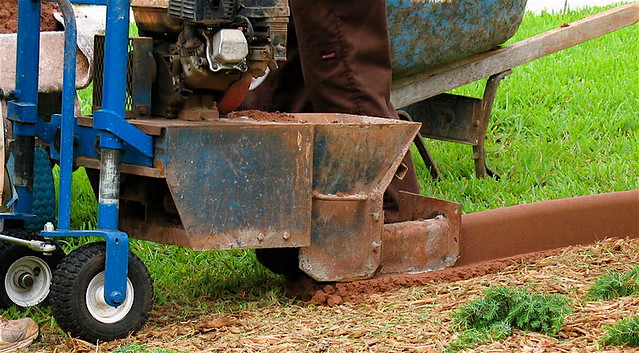

A lot of civic money is spent installing and maintaining landscaping along some major city roads. This is particularly noticeable in post-1960 areas where arterials usually have significant side boulevards that are grassed or sometimes even treed. The landscaping is designed to be appreciated at 70 kph rather than humans travelling on foot or on bicycle. Even in modern suburbs with planned collector streets, the super-wide side boulevards look like so much unappealing, wasted space (see for example, Spratt Drive in Riverside South, but identical examples are found in all new suburban areas).
In recent years, our Cities have shown more enthusiasm for greening inner-city streets. Sometimes this takes the form of planting beds adjacent to the sidewalk. These beds get trampled on and abused since sidewalks are usually way too narrow to meet actual walkability requirements.
The City installed has installed some planter beds with raised curbs to protect them. Preston is the most noticeable example, with curbs protecting most of the planting zones:

Below is another example, with a lawn area protected from intrusion:
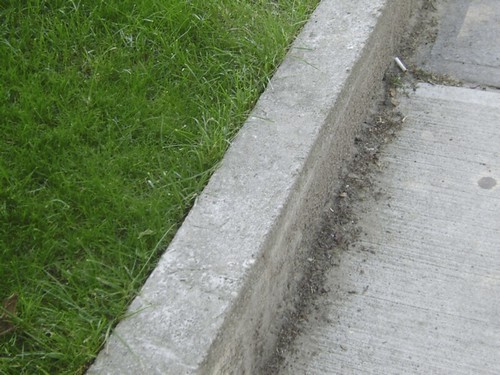
The curb has some architectural merits in its own right. It evokes strength, permanence, solidity. It clearly identifies the linearity of the sidewalk and the separateness of the planting bed. It provides a balance-beam experience for little children.
I recently came across this variation on a curb, which expands the plant zone by half a foot, while down-playing the curb as a hard feature in a planted landscape:
If the curb was really that narrow, it wouldn’t have much strength. Look closely at the photo below, to see the top of the curb is sloped back at a steep angle:
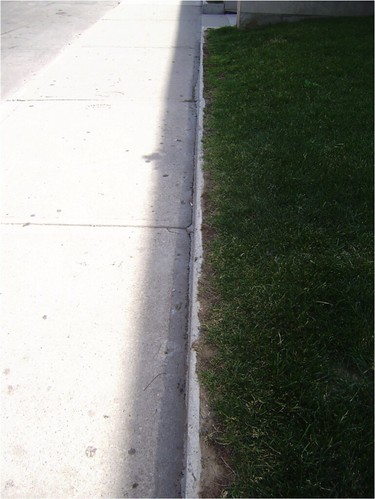
Now for a less successful effort:
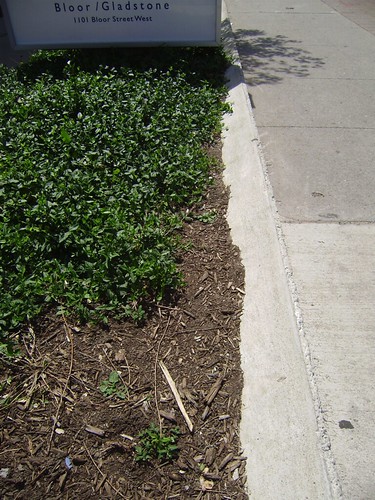
The planter shown above hasn’t enough dirt in it, nor is there enough plant material (to be fair, it was in front of building just renovated; maybe the gardeners are rushing to fix it right now …).
Here is another example of a properly filled plant zone:
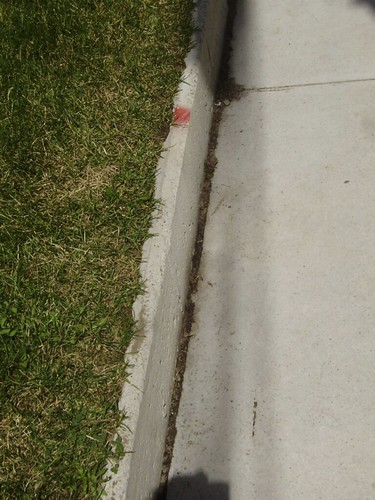
Fixing our pedestrian urban environments isn’t rocket science. It is more a matter of political will, of deciding that active transportation deserves respect and suitable streetscaping treatments. Making the top of a planter curb slope down isn’t expensive, and doesn’t require new construction skills.
I have added this concept — narrow visible edge to planter curbs and walls—to my wish list. I will be promoting it at the next streetscaping project opportunity. If we don’t demand better streets and sidewalk experiences, we won’t get them. We need a shopping list of amenities that enhance the walkspace experience.
top photo by Andy Tinkham

2 comments
Love it. I’ve always hated the fuzzy edge that forms at sidewalks and the garbage that easily accumulates there. Even an inch or two would separate them nicely and keep things tidy.
Curbs and sidewalks are the kind of thing that most people give zero thought to. That is until a good streetscaping project like Preston is completed, and people marvel at how much better the street looks.
Please keep writing these articles – you message is important and it doesn’t get enough attention. I’ve long hoped that some of the maistream media would pick your articles up to allow reach a broader audience.